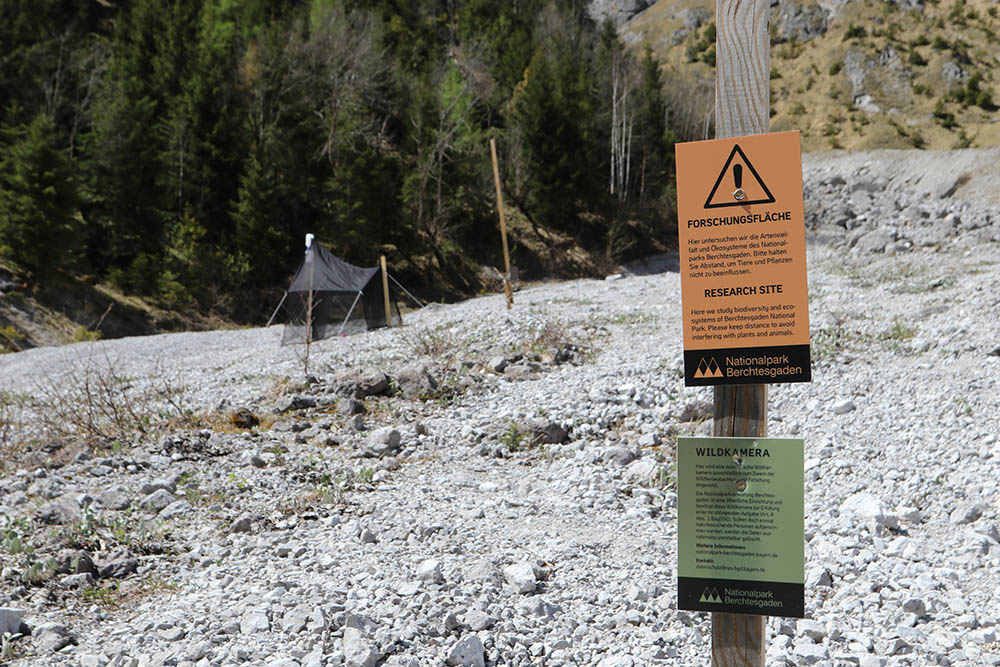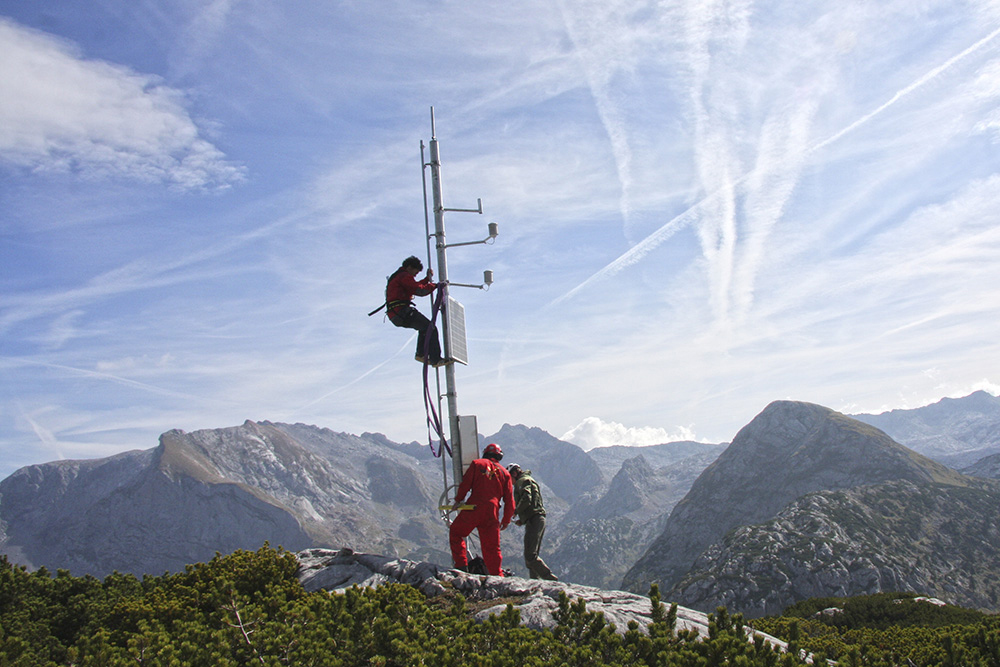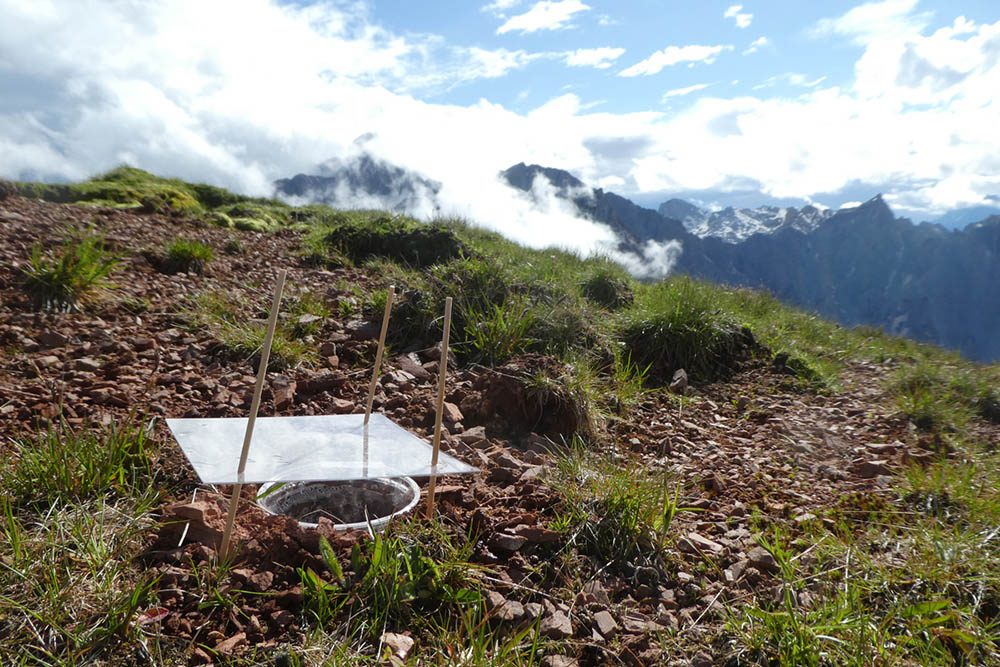Basic data Bavarian National Park
In close cooperation with the Bavarian Forest National Park, we develop a harmonized collection of consistent basic datasets, which are of fundamental thematic relevance for joint ecosystem research activities in both parks.

Research site with malaise trap
Referring to the current trends of increasing digitization, FAIR data principles (Findable, Accessible, Interoperable, Re-usable) and growing national and international initiatives on research data infrastructure, Berchtesgaden National Park has launched a project explicitly dealing with research data management.
The aim is to compile - together with the Bavarian Forest National Park - a collection of basic datasets that are suitable for cross-regional research in both parks. Over the past decades, the two protected areas have been creating abundant data by numerous research projects. However, these data are often not directly accessible by science and the comparability of regional data sources is not always obvious.

Climate station
For this reason, the challenge of the project is to find and harmonize relevant data in both areas covering a wide range of topics. Main project steps foreseen are the conversion of the collected data into appropriate formats, the addition of metadata and the provision to researchers at a commonly accessible storage location.
The result expected will be a set of basic data that covers thematically the parameters of major relevance to ecosystem research (e.g. climate and soil data) and spatially the Berchtesgaden site at the northern rim of the Alps as well as the Bavarian Forest site in direct vicinity to the Czech Bohemian Forest.
